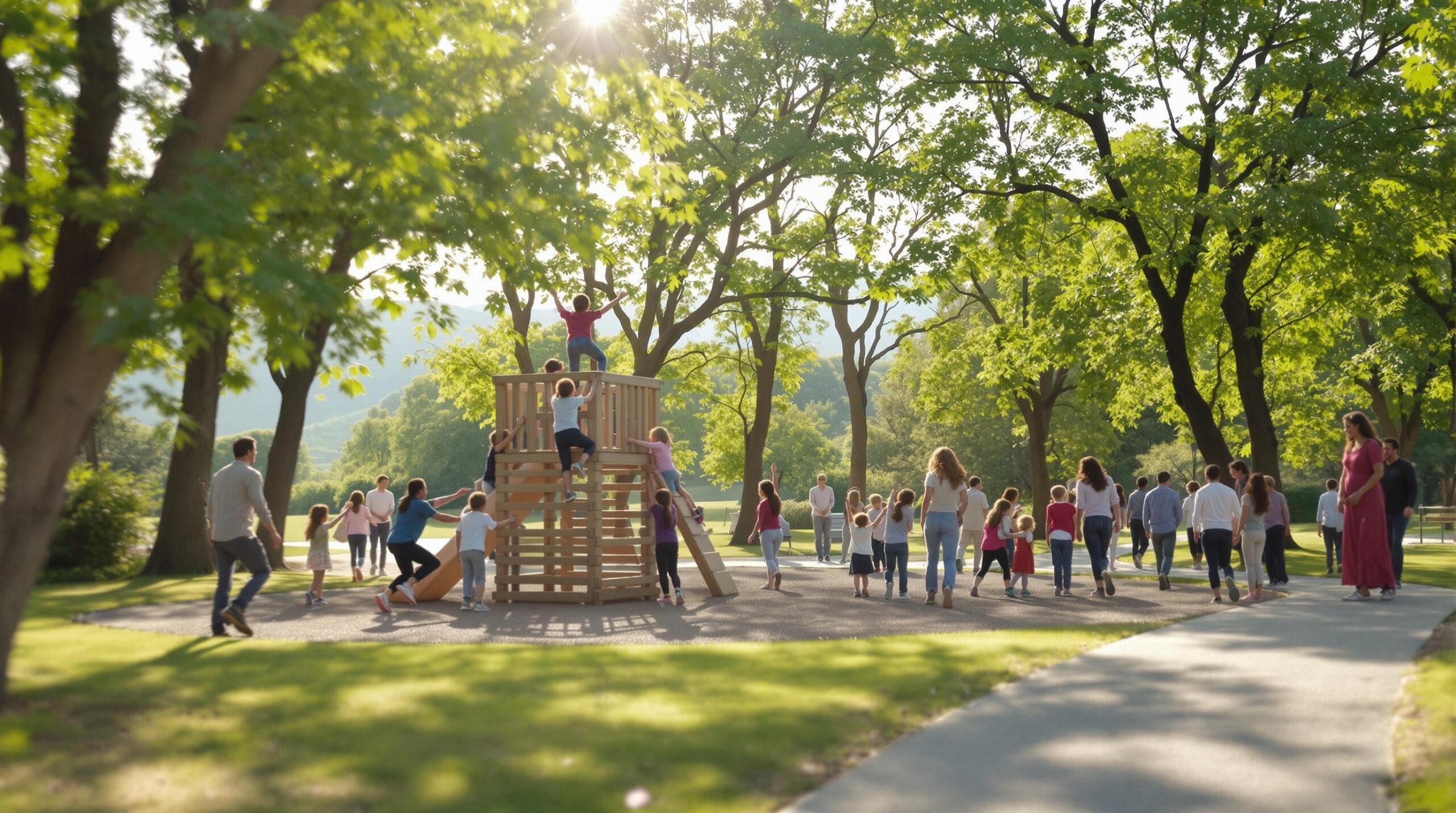New York is pouring hundreds of millions of public dollars into playgrounds, pools and wellness programs in 2025, positioning the state as a prime target for family-oriented travel. For private campground, RV-park and glamping operators, these developments may signal increased interest from families seeking “screen-free” escapes that match what their children see in taxpayer-funded spaces, though no quantitative evidence currently ties public investment to a broad consumer shift toward private venues with copy-cat amenities.
The centerpiece is Gov. Kathy Hochul’s new Unplug and Play plan, a four-part strategy aimed at rescuing kids’ mental and physical health and building the brick-and-mortar to support it. NY BRICKS funds community centers, NY PLAYS modernizes playgrounds, NY SWIMS adds $50 million in the 2025 budget to an already-authorized $150 million pool-building initiative (total program value now $200 million), and Get Offline, Get Outside 2.0 promises “hundreds of thousands” of new youth-activity slots, according to the state press release.
“It’s time to let our kids just be kids again,” Hochul said in the same statement. For the outdoor-hospitality sector, those newly unplugged kids translate into families expecting quality playgrounds, basketball half-courts or even splash pads when they pull into a private park.
Separately, New York State Parks has kicked off the 2025 State Parks Wellness Challenge, inviting visitors to complete 50 missions across eight wellness categories and track progress via the Goosechase app or printed brochures at more than 250 sites. Finishing any 25 missions earns a sticker and postcard, an offer the agency hopes will build on last year’s record 84 million visits, the Wellness Challenge launch said.
“New York State Parks offers magnificent places to visit and features year-round opportunities to engage with nature at little to no cost,” Hochul added in that release. Parks Commissioner Pro Tem Randy Simons underscored the mental-health payoff, saying, “Wellness comes in many forms, and spending time outdoors and offline fosters positive mental health, improves resiliency, relieves depression, anxiety and stress.”
Operators eager to ride the same marketing wave can move fast with low-cost tweaks. Packaging two- or three-day screen-free itineraries that rotate families through guided hikes, craft kits and campfire storytelling can encourage participation and boost ancillary spending. Lending pickleball paddles, kickballs or binoculars at no charge can spark spontaneous play. Handing every guest a printed or digital “camp passport” modeled on the state program, and awarding a patch or s’mores kit for completed tasks, helps drive engagement and sharing. Blocking weekday field-trip slots for Boys & Girls Clubs or recreation departments likely to receive Get Offline funds can help lift mid-week occupancy. Turning June 14 into a mini-festival with adaptive equipment demos tied to the statewide Get Outdoors & Get Together Day allows parks to attract more families and offer a built-in promotional hook.
The June 14 statewide day of inclusive recreation will unfold across dozens of parks and Department of Environmental Conservation lands, according to state records. Hosting a concurrent event gives private parks the chance to upsell camp sites and connect with families looking for a day event or overnight stay.
Meanwhile, lawmakers are considering two bills that could tilt the competitive field. Assembly Bill A3630 would create a blue-ribbon commission to study public versus private recreation, while Senate Bill S1377 would convene a task force on outdoor environmental education and recreation. Either could spawn grant programs—welcome news for operators—but they could also shine a spotlight on private fee structures.
Downstate expectations are rising as well. New York City’s $3.2 billion Vital Parks for All plan pledges more bathrooms, pool upgrades, added tree canopy and a “Vital Parks Explorer” digital map so residents can check park conditions in real time, according to testimony at a Vital Parks hearing. When city families venture upstate, they will expect similar ADA-friendly pools and easy-to-use amenity maps.
Capital upgrades that meet those expectations do not all require seven-figure budgets. Installing ADA-compliant routes and inclusive play structures to mirror NY PLAYS standards helps ensure accessibility for all guests. Adding prefab splash pads or compact container pools can echo the NY SWIMS message on water safety and deliver high perceived value. Placing low-maintenance fitness rigs or stretching stations along trails can court adult wellness seekers without major expense. Using recycled decking, solar shade structures and high-efficiency pumps helps properties align with the state’s sustainability rhetoric. Upgrading wayfinding and safety signage provides an affordable polish and a professional first impression.
Taken together, the state’s marketing muscle and wellness zeitgeist point to sustained demand for nature-rich lodging. Auditing amenities now against public-sector benchmarks—before peak season crowds arrive—could determine which properties capture the screen-free family dollar.
New York State Parks, Recreation and Historic Preservation manages more than 250 parks, historic sites, trails, golf courses and boat launches statewide.


